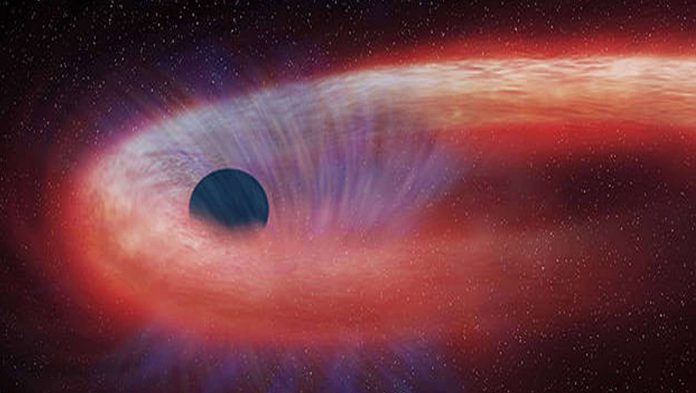Beginning in 2018, one of the brightest X-ray lights in the sky went dark, and scientists still aren’t sure why.
The black hole responsible for creating the lights-out mystery lives in GRS 1915+105, a star system 36,000 light-years from Earth containing both a normal star and the second-heaviest known black hole in the Milky Way. That heavyweight is 10 to 18 times the mass of the sun and second in mass only to Sagittarius A* (or SgrA*), the supermassive black hole in the galactic center. The region around the GRS 1915+105 black hole typically shines with an intense X-ray light, as it feeds on its companion star. As the material circles the cosmic drain, the particles within rub together, generating energy before dropping into the darkness at the black hole’s center. That swirling material is the black hole’s accretion disk, which lights up with X-rays as the black hole devours more and more sustenance.
But researchers saw something surprising beginning in July 2018: The light from the GRS 1915+105 system began to dim. Then, in early 2019, the light dimmed even more, and no one had ever seen anything like it before.
So what’s going on?
“We suggest that this state should be identified as the ‘obscured state,'” the researchers wrote in a new paper published Jan. 1 to the arXiv database, which has not yet been peer-reviewed.
In other words, something has come in between the light source and the Swift X-ray Telescope that’s been monitoring the object, obscuring the telescope’s view.
Plenty of light is still coming from the bright region near the black hole’s event horizon, which astronomer’s sometimes call the “engine,” as well as the larger “accretion disk” of infalling matter. But that light isn’t reaching Earth the way it used to.
“The obscuration geometry” — the precise nature of the structure that’s blocking the light — “is hard to discern,” said lead study author Mayura Balakrishnan, a graduate student in astronomy at the University of Michigan.
No existing telescope can resolve details of the faraway system, so Balakrishnan and her co-authors had to make inferences from how the light coming from GRS 1915+105 changed from day to day between 2018 and 2019.
Black holes with large companion stars sometimes dim because stellar winds from their companions can push clouds of gas in front of their lights.













